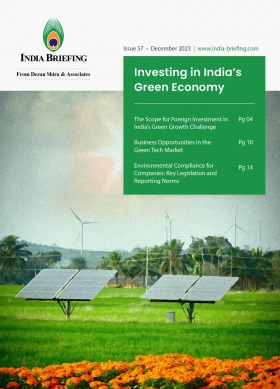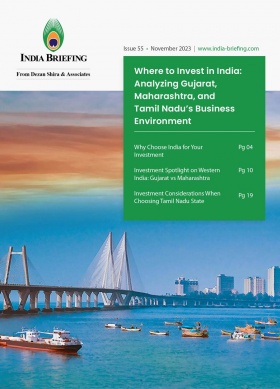Ongoing Red Sea Crisis Compels Global Shipping to Find New Routes
A land corridor is being considered to transport cargo from the Gulf, passing through the UAE, Saudi Arabia, and Jordan, and ending at Israeli ports. Use of the route was launched without publicity late last year. It could become a feasible alternate route alongside the Bab El-Mandeb-Red Sea maritime route, which has been facing indiscriminate attacks from Yemen’s Houthi rebels in the Red Sea, putting global maritime trade in a tailspin and rattling the global energy market. The Bab El-Mandab strait is a 20-mile-wide chokepoint for maritime traffic that enters and exits the southern part of the Red Sea.
What is the new land corridor?
Referred to as the ‘Land Connectivity by Trucks’ project, the U.S.-backed transportation corridor enables cargo to be transported between the Gulf of Dubai, UAE, and Israel’s Haifa Port, and significantly cuts cost and time, according to CEO Hanan Fridman speaking to the Times of India and whose Israeli startup Trucknet Enterprise Ltd. provides logistics solutions for companies along the route. Fridman noted that a 14-day shipping time was reduced to four days by land.
The land corridor project is a result of the 2020 Abraham Accords, which allowed Israel to normalize relations with the UAE, Bahrain, and Morocco. It was intended to serve as an alternative or complementary route to the Suez Canal depending on whether the critical shipping corridor was under attack or in peacetime. It appears now to have become an option for exporters to avoid the Houthi hot zone in the Red Sea.
Uncertainty over long-term feasibility of the corridor
Per reporting by various media, Saudi Arabia appears to have given its tacit approval for use of the corridor, which will deliver cargo between the Gulf states and Israel via Saudi Arabia, Jordan, and a possible extension to Egypt. Earlier in 2023, the U.S. had brokered Saudi-Israeli normalization talks, and once Houthi rebels from Yemen increased their attacks on commercial vessels in the Red Sea – there appeared more reason to push ahead with the land corridor. Interestingly, in December, Jordan’s Ministries of Transport and Industry and Trade outright denied the use of the “alternative land bridge” as “absolutely false”. Saudi Arabia’s ties with Israel also remain tenuous following the Israel-Hamas war in Gaza.
How feasible will the use of the Middle East land corridor thus remains to be seen, even as companies are increasingly being forced to get ambitious about the transport of goods. The long-term viability of the Middle East land corridor depends both on regional stability and permission from countries hosting sections of the route. In normal times, the route would just not be used on a commercial scale due to strained ties between Israel and Arab states.
The trucks also carry significantly lesser volume of goods than their shipping counterparts; however, stakeholders, like Hapag-Lloyd, feel that despite only moving a limited amount of cargo, the corridor could serve as a short-term solution to boost trade flow from ports in the region like Jeddah, which “would otherwise be cut off from their normal links to the global economy”.
Currently, the Iran-backed Houthi rebels state they are targeting Israeli shipments and military traffic due to the war in Gaza. Would shipments from countries seen to be backing this corridor be targeted next? It is another diplomatic consideration and proving a headache for exporters.
Meanwhile, progress on the U.S.-backed India-Middle East-Europe Economic Corridor, announced during the G20 Summit in India last year, has also stalled following the Israel-Hamas war.
Who are using this land route now?
In early February, a Bloomberg report stated that Trucknet Enterprise was “sending goods including food, plastics, chemicals and electricals from ports in the United Arab Emirates and Bahrain, through Saudi Arabia and Jordan, on to Israel and further to Europe”. Fridman also noted that cargo from India, Thailand, South Korea, and China had been sent by trucks in recent weeks. The Bloomberg report further stated: “Hapag-Lloyd AG, the world’s No. 5 container carrier, is looking to link Dubai’s Jebel Ali and two eastern Saudi ports with Jeddah on the west coast. Another of its options connects Jebel Ali with Jordan.”
Trucknet operates its route in collaboration with companies such as Dubai’s PureTrans FZCO, Bahrain’s Cox Logistics, and WWCS in Egypt, as per its website. The startup offers a digital platform that matches freight with available space on trucks, providing real-time visibility throughout the entire route.
Red Sea crisis: Concerns for Indian exporters as shipments face delays, become costlier
The Red Sea attacks are impacting India’s ambitious near-term export targets, in particular shipments of labor-intensive industry output, raw material for goods manufacturing, and petrochemicals. Freight shipments have been 25-50 percent costlier since mid-November due to the Red Sea crisis. During December 2023, rates for container shipments from Asia to Europe experienced their most significant weekly surge, with certain prices doubling. According to Ankit S Patel of export promotion body Chemexcil, the “quote for a 40-foot container that stood at $700 is now $4,000-5,000.”
Speaking to media, Vijay Kalantri, Chairman of the MVIRDC-World Trade Center (WTC), noted that India relies heavily on North America, the European Union, and West Asia for its export earnings (about 47 percent). Consequently, exporters use shipping to deliver goods at competitive rates. As the attacks on critical maritime routes increase, they affect exporters who have entered into cost insurance and freight (CIF) contracts with their foreign buyers. In these cases, the Indian exporter would need to bear the increased shipping and insurance costs under their CIF contracts.
The Indian government has set targets of achieving US$200 billion in engineering exports and US$120 billion in exports of electronic goods by 2025. For merchandise trade, India has set a US$500 billion export target benefiting 10-11 sectors by 2030. This would be aligned with its production-linked incentive (PLI) programs and ambitions to be Atmanirbhar Bharat or a Self-Reliant India and “Make in India, Make for the World”. Overall, India aims to achieve US$2 trillion in goods and services exports by 2030.
Since the Red Sea crisis has caused severe supply chain disruptions, comparable to the COVID-19 pandemic and jeopardizing global economic recovery, the Indian government is defining its economic performance and export targets within a range, acknowledging the impact of external pressures.
Red Sea crisis: Impact on global trade
The Bab el-Mandab Strait in the southern Red Sea has faced continuous attacks for months, from heavily armed hijackers to missiles and drones, compelling global shipments to reroute around Africa’s Cape of Good Hope, resulting in commercial delays and increased freight costs. This crisis has intensified pressures on global supply chains, compounded by restrictions on transit through the Black Sea following the Russia-Ukraine conflict. Forbes estimates that the longer detour around Africa costs ships an additional US$1 million worth of fuel per trip.
Overall, 20 percent of global container trade passes through the Suez Canal, with over 80 percent of international goods trade volume transported via maritime routes. – UNCTAD
The Suez Canal, a vital link between the Mediterranean Sea and the Red Sea, experienced a 42 percent decrease in traffic following the Houthi attacks, as per a January report from UNCTAD. Approximately 12-15 percent of global trade, worth approximately US$1 trillion and involving 20,000 ships annually, traverses the Red Sea, crucially connecting Europe and Asia.
Recent trends showed an 18 percent decline in tanker traffic, a 6 percent reduction in bulk cargo ships carrying grain and coal, and a cessation of gas transport through the region. UNCTAD reported a 67 percent year-on-year decline in weekly container ship transits via the Suez Canal.
Inevitably, as Forbes reports, cargo insurance rates for voyages through the Red Sea have sharply risen – going from an average of 0.6 percent to 2 percent of cargo value. Insurers have also added war risk premiums, further escalating costs for utilizing the Suez Canal route.
Shipping rates from North Asia to the U.S. East Coast have surged by 137 percent to US$5,100 for a 40-foot container since early October, with rates to the West Coast rising by 131 percent to US$3,700. China also faces challenges from Red Sea disruptions, with shipping costs to Europe doubling to approximately US$7,000 from December 2023’s US$3,000, posing a significant threat to its export-oriented economy.
Egypt’s revenues from the Suez Canal at the beginning of the year have decreased by about 40 percent compared to 2023 (from US$804 million to US$428 million), posing significant economic challenges. East African countries like Ethiopia, Somalia, and Kenya are at risk due to disruptions in wheat imports via the Suez Canal, potentially leading to rising food and fuel prices. Western firms such as Gechem GmbH & Co KG, a German chemical giant, and automakers like Tesla and Volvo Car, are halting European production lines due to raw material shortages or supply delays caused by rerouted shipments.
About Us
India Briefing is produced by Dezan Shira & Associates. The firm assists foreign investors throughout Asia from offices across the world, including in Delhi and Mumbai. Readers may write to india@dezshira.com for more support on doing business in India.
We also maintain offices or have alliance partners assisting foreign investors in Indonesia, Singapore, Vietnam, Philippines, Malaysia, Thailand, Bangladesh, Italy, Germany, and the United States.
- Previous Article India-EFTA Close to Finalizing a Free Trade Agreement
- Next Article Increasing Private Sector Participation Vital for India’s Infrastructure Sector









